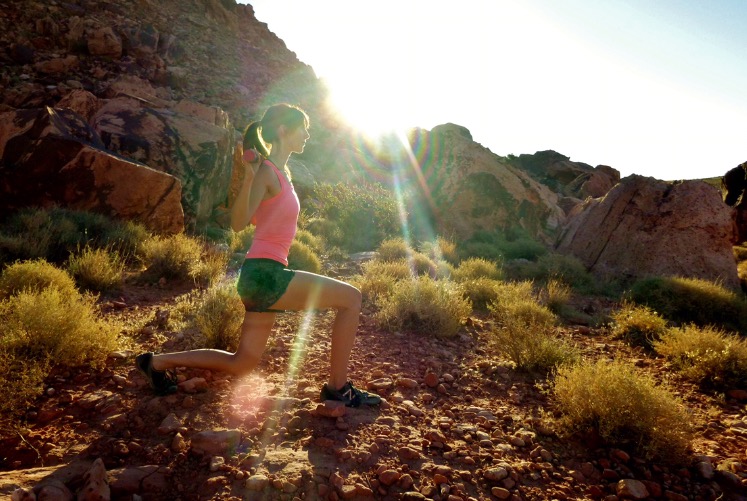Most people experience low back pain due to a lack of mobility in their hips. As most Americans spend their days sitting, our muscles are no longer being used for function. But that’s exactly what they are here for – to help us function better. Unfortunately, for most of us, our back bares a lot of the burden.
What I see most when I evaluate a personal training client in their squat or lunge is the lack of functionality in their hips and leg muscles; they are too forward in their knees (knees are in front of their toes).
Though this is common, it also shows that their glute muscles (Gluteus Maximus, Gluteus Medius, Gluteus Minimus) and hamstrings are not triggering or doing their job. Instead, everything is felt in the knees (ouch!).
When you learn to sit back into your squat (balance can be tricky in the beginning) or sit down (not forward) in your lunge, your muscles can do their job properly. From here, pressing out of your squat or lunge from mainly your heel, the proper muscles will fire (Quadriceps, Glute muscles, and Hamstrings). Over time, you’ll discover that your muscles will begin to trigger during at-home functional tasks like bending down to pick something and your back will thank you and your lower body for stepping up!
To kick it up a notch, you can come up from your squat and onto your toes (plantar flexion). This will challenge your balance and activate your lower leg muscles (Gastrocnemius, Soleus, anterior Tibialis and Peroneals).
A vital part of functionality is being able to move in all three planes of motion (forward/backward, side to side and rotational). When we do this, we ask even more muscles to turn on. This is why side lunges, cross lunges, and sumo/plie squats are important to incorporate into your workout regime as well. You can even add a lateral leg lift to your squat simply by pressing up from your squat and laterally lifting one leg out to the side, balancing on one foot before returning to starting position. In doing this, you might find that your range of motion (ROM) laterally is low. That’s okay. Stretching and working to increase ROM will help with mobility, flexibility, and functionality.
If you’re new to squatting and lunging, you can access my instructional videos here. If you’re not new to these moves, consider how you can incorporate a progression into your routine. Pressing onto your toes? Adding a lateral leg lift? Adding light weights? Take it up a notch this month – it’s 2020!
Subscribe to my newsletter for wellness tips & tricks from the pros.
EM: alexis@synergywellnesslv.com

